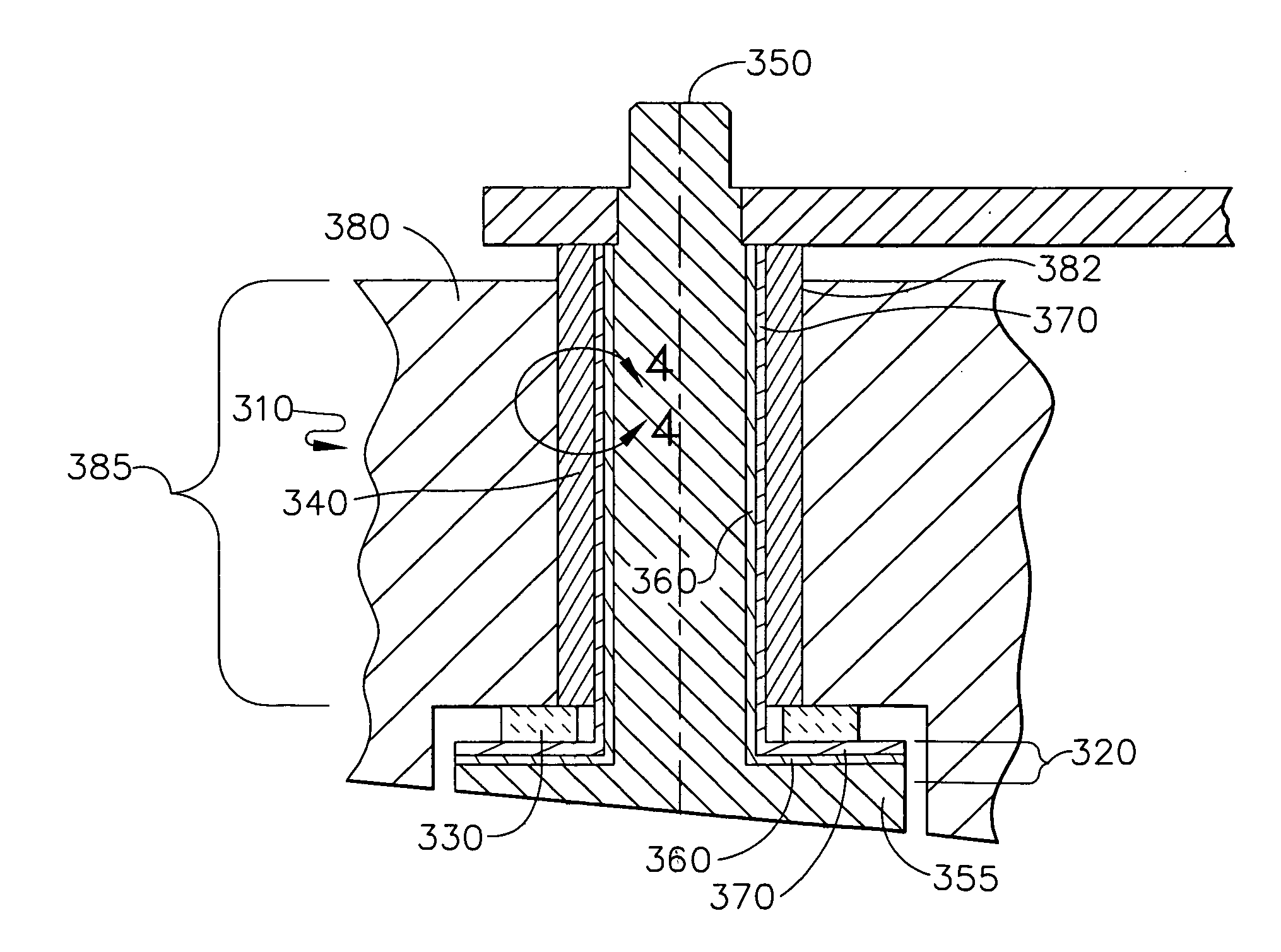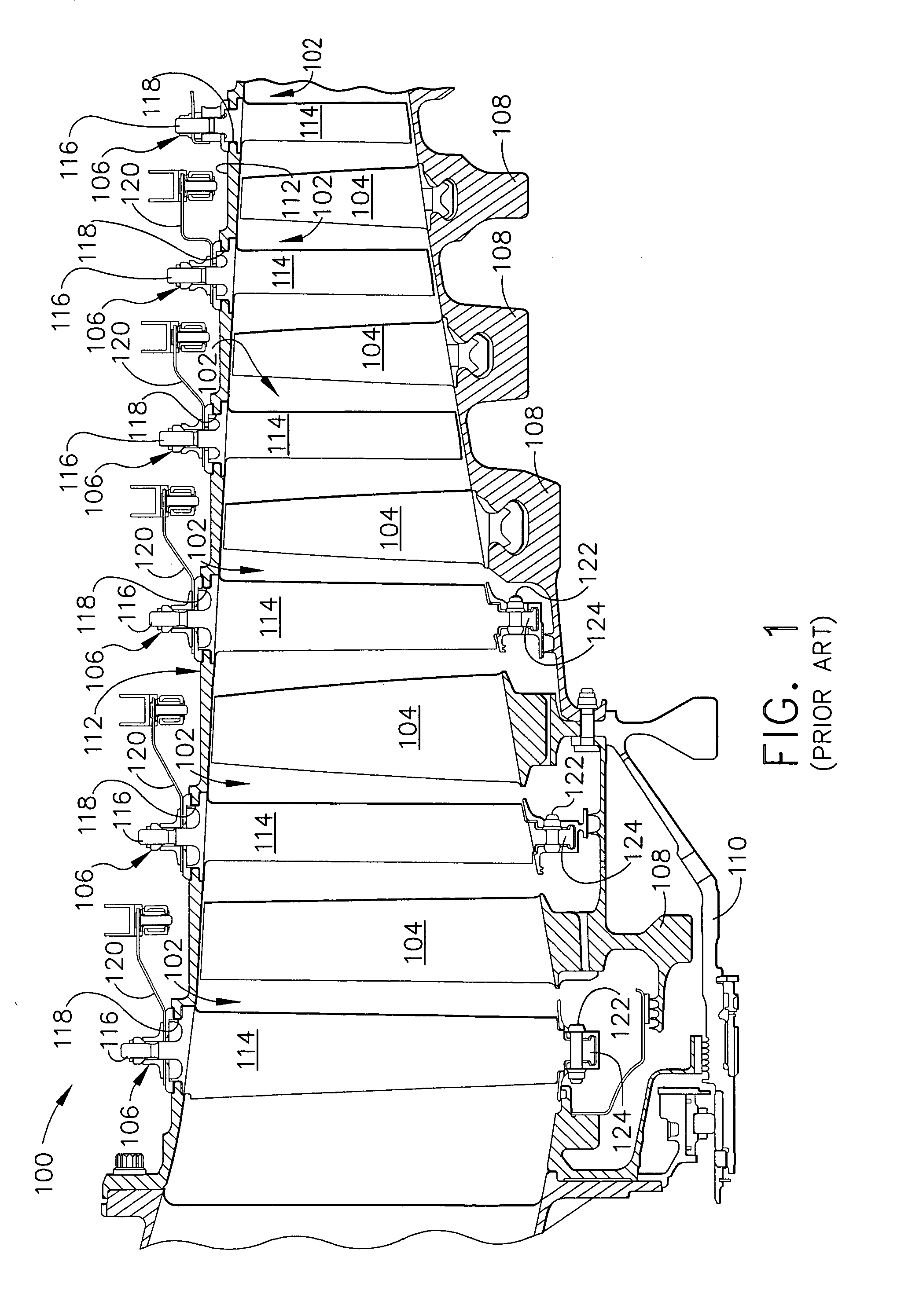High temperature ceramic lubricant
a ceramic lubricant and high temperature technology, applied in the direction of liquid fuel engines, superimposed coating processes, machines/engines, etc., can solve the problems of high cost of repair and/or replacement, high vibration of bushing and washer structures used in variable stator vanes, and wear of many structures in gas turbine engines, so as to improve resistance, reduce wear, and improve the effect of resistan
- Summary
- Abstract
- Description
- Claims
- Application Information
AI Technical Summary
Benefits of technology
Problems solved by technology
Method used
Image
Examples
Embodiment Construction
[0029]FIG. 1 is a schematic view of a section of a known high-pressure compressor 100 for a turbine engine (not shown). Compressor 100 includes a plurality of stages 102, and each stage 102 includes a row of rotor blades 104 and a row of variable stator vane assemblies 106. Rotor blades 104 are typically supported by rotor disks 108, and are connected to a rotor shaft 110. Rotor shaft 110 is a high-pressure shaft that is also connected to a high-pressure turbine (not shown). Rotor shaft 110 is surrounded by a stator casing 112 that supports variable stator vane assemblies 106.
[0030] Each variable stator vane assembly 106 includes a variable vane 114 and a vane stem 116. Vane stem 116 protrudes through an opening 118 in casing 112. Variable vane assemblies 106 further include a lever arm 120 extending from variable vane 114 that is utilized to rotate variable vanes 114. The orientation of variable vanes 114 relative to the flow path through compressor 100 control airflow therethroug...
PUM
| Property | Measurement | Unit |
|---|---|---|
| temperatures | aaaaa | aaaaa |
| weight ratio | aaaaa | aaaaa |
| coefficient of friction | aaaaa | aaaaa |
Abstract
Description
Claims
Application Information
 Login to View More
Login to View More - R&D
- Intellectual Property
- Life Sciences
- Materials
- Tech Scout
- Unparalleled Data Quality
- Higher Quality Content
- 60% Fewer Hallucinations
Browse by: Latest US Patents, China's latest patents, Technical Efficacy Thesaurus, Application Domain, Technology Topic, Popular Technical Reports.
© 2025 PatSnap. All rights reserved.Legal|Privacy policy|Modern Slavery Act Transparency Statement|Sitemap|About US| Contact US: help@patsnap.com



